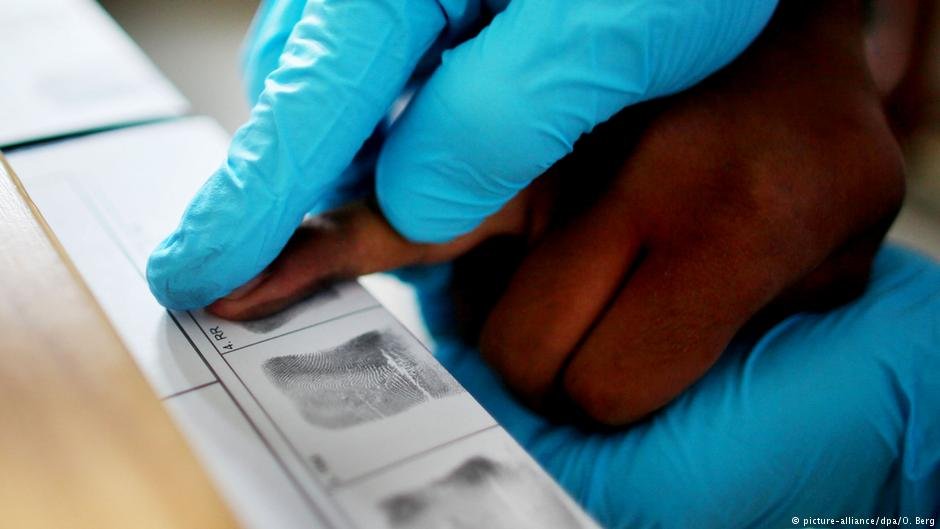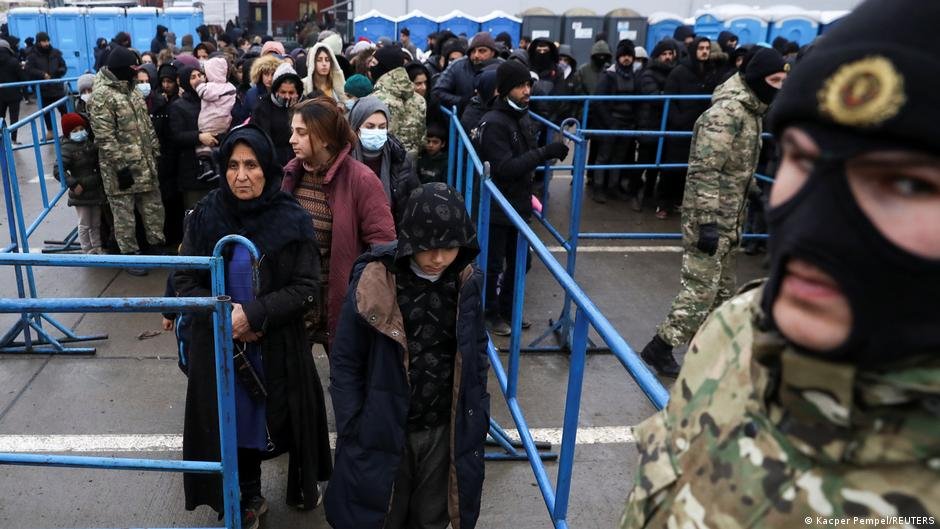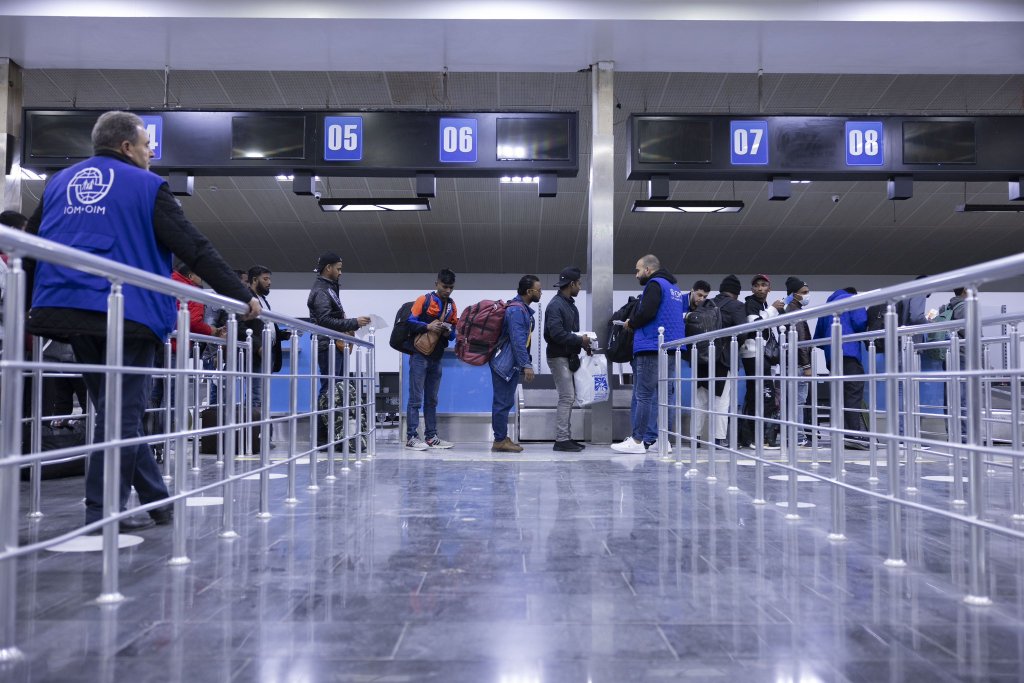The new EU Pact on Migration and Asylum which was approved by the European Parliament on Wednesday has been hailed as "historic." But what’s it all about? And what changes might be ahead? InfoMigrants takes a look.
The new EU Pact on Migration and Asylum was first presented four years ago. Now that it has been finally agreed upon by member states, it has been hailed as "historic" and is promising to get tougher on migration and asylum across the bloc.
According to the EU Home Affairs press release relating to the pact, dated April 11, the pact presents a "set of new rules managing migration and establishing a common asylum system at EU level." The EU Commission promises the pact will "deliver results while remaining grounded in European values."
Also read: European Parliament agrees on stricter EU migration rules
The pact promises to be "firm but fair" and is determined to manage migration, something that many EU countries need, while making sure that those who don’t qualify for protection can be sent home swiftly.
The new system is broken down into four main categories: "Secure external borders;" "fast and efficient procedures;" "effective system of solidarity and responsibility;" and "embedding migration in international partnerships."
Also read: Opinion divided on new EU migration pact

Secure external borders
- The first category is perhaps where migrants can expect the most changes. The EU promises "robust screening" at the borders and there has been talk of building processing centers at or near the borders to screen migrants effectively and sort those who might qualify for asylum from those who don’t.
- The EU promises that "those not fulfilling the conditions to enter the EU will be registered and subject to identification, security and health checks."
- Those checks will take place within seven days at external borders and three days for people apprehended within the territory. Once screened, they will be "quickly channeled" towards one of three procedures:
- Border Procedures
- Asylum procedures
- Returns procedures

Eurodac
- The Eurodac asylum and migration database comes into play here to unify the checks and communicate with all EU members the information contained within. The system will ensure "clear identification of everyone who enters the EU as an asylum seeker or an irregular migrant," the EU says.
- The new Eurodac system will:
- Make it possible to count not only applications but also applicants
- Fingerprint, facial recognition, identity data and copies of identity and travel documents will all be added to the system
- Storage will be extended to five years and applicants to asylum for 10 years
- Children’s data from six years and over will be added to the system, to prevent separation from families and protect those vulnerable to human trafficking and exploitation.

- There will be a new "mandatory border procedure" applied to those who are applying for asylum but "unlikely to need protection." Anyone trying to mislead the authorities or who are deemed to present a security risk will be sent back. The EU is promising "efficient returns" alongside "reintegration support" for those sent back.
- During these border procedures, protections will be in place:
- Free legal counseling
- Free legal assistance and representation for appeals
- More attention to vulnerable individuals with special needs
- During crisis and emergency situations, the EU will add additional operational assistance and funding. This will include "enhanced solidarity measures" which could take the form of "relocations, financial contributions and alternative solidarity measures" or a combination of the above.
Fast and efficient procedures
- Procedures relating to asylum and returns are expected to be streamlined and speed up under the new rules.
- There will be a new qualification regulation in place to "harmonize criteria for international protection." This will also "clarify rights and obligations of beneficiaries."
- The system seeks to prevent abuses, by setting out clear obligations for asylum seekers, "providing for consequences in case of non-compliance."
- There will be new time limits for applicants to apply for asylum and for concluding the examination of applications.

- The Reception conditions directive will make sure that reception standards are harmonized across member states to ensure "adequate standards of living for those arriving in the EU seeking international protection."
- Assessment of needs for asylum seekers must be completed within 30 days and there will be specific guarantees for victims of torture and violence.
- Asylum seekers with well-founded claims will be able to access the labor market after six months.
- When assessing claims for protection, EU states will check whether there are any alternatives to providing protection in their country. For instance: if there is a safe part of the country of origin where people could legitimately be sent back to. If so, refugee status will not be granted.
- International protection status can also be withdrawn when it is deemed "no longer needed" or "where certain criminal acts are committed or the person otherwise poses a security threat."
- Where there is a clear right to international protection, residence permits will now be issued within 90 days.
- There will be more reinforcement of the rights of unaccompanied minors.
- Double applications for asylum will be prevented by tougher measures to enforce rules and crack down on abuses via the Eurodac database.
- There will be less "secondary movement" tolerated, that is if you apply for asylum in one country and then seek to move to another EU country before your asylum has been granted. The rules around sending you back to the first country of application will be toughened and the time limits for member states to apply for returns will be lifted.
Effective system of solidarity and responsibility
- Solidarity mechanisms already exist within the EU but not everyone has been participating and some states offer more ‘solidarity’ than others. For many of the so-called "frontline" Mediterranean states like Greece, Malta, Italy and Spain, the relocations are still not enough and they often struggle to deal with the number of arrivals.

- The EU is proposing a more permanent "solidarity framework." They say that means EU countries will receive the solidarity they need. Other EU countries can choose whether to participate by offering relocations, financial contributions, operational support or request deductions via 'responsibility offsets.'
Also read: EU pledges 210 million euros funding for Mauritania migration strategy
- There will also be "clearer rules on the responsibility for asylum applications." This will determine which EU country is responsible for assessing an asylum application.
- Under the new pact, asylum seekers must remain in the EU country of first entry until their asylum application has been determined. Anyone failing to comply with this directive would cease to receive the full support and only receive it for "basic needs."
Embedding migration in international partnerships
- The EU will continue to seek to form agreements with third countries to make sure that border management is strengthened at the points of departure. This will involve reinforced cooperation with the European Border Agency Frontex.
- There will be new "dedicated and tailor-made anti-smuggling operational partnerships with partner countries and UN agencies to tackle smuggling in key locations." Morocco, Tunisia, the Western Balkans and Asia are all mentioned here.
- There will be more "cooperation on readmission." The EU will regularly assess whether the 64 countries with whom it has visa-free agreements can continue with those. If those countries refuse readmission applications, their visa-free agreements could be suspended.
- The legal pathways will be developed by the EU Talent Pool. This will facilitate international recruitment. The talent partnerships will allow non-EU citizens to work, study and train in the EU. Talent partnerships have so far been launched with Morocco, Tunisia, Egypt, Pakistan and Bangladesh.
Also read: EU commissioner Johansson: 'We have to limit departures and build legal migration pathways'
